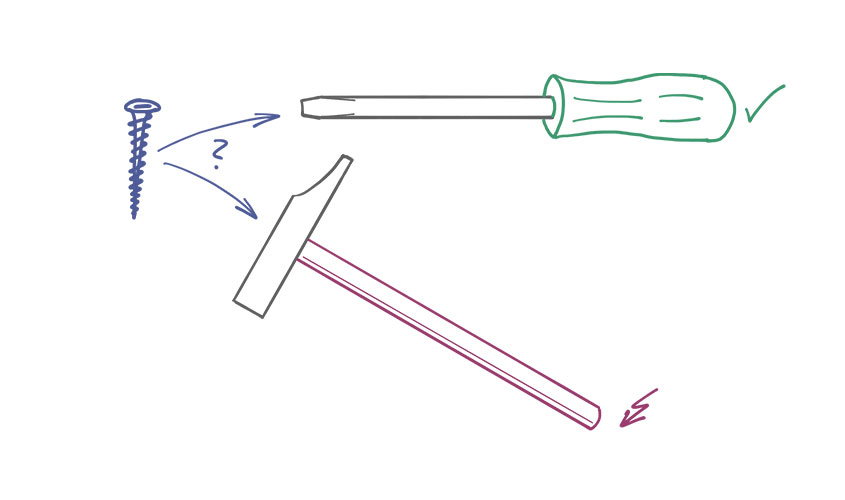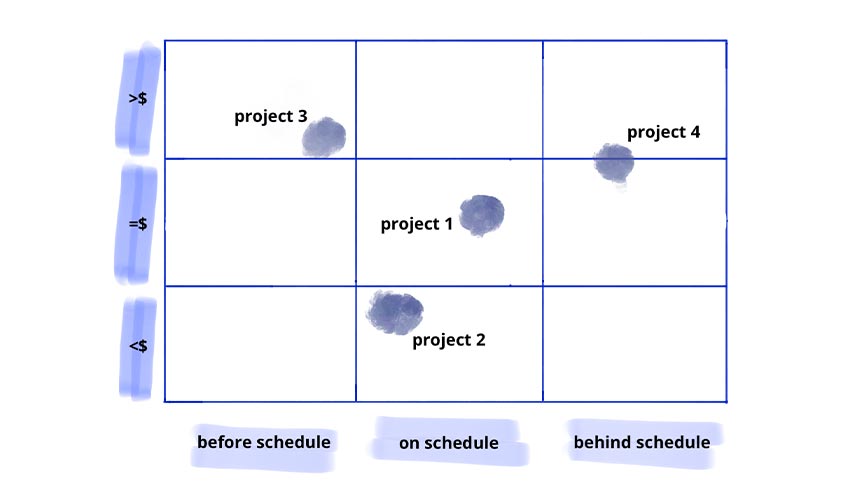Management tools are a dime a dozen. And yet, contrary to popular belief, most of them are good and helpful if used correctly and in an adequately defined context.
In “Tool Box Talks” we introduce you to common and less well-known tools and show you how you can exploit their potential for your enterprise, with today’s focus on a portfolio matrix.

What is a portfolio matrix and when should it be used?
A portfolio matrix is a portfolio management tool that assists its user in keeping track of several projects within the project portfolio. By visualizing process adherence it enables the portfolio manager to identify critical projects at a glance.
This tool is particularly useful when it comes to coordinating a greater set of projects, where the portfolio manager is not identical with the project manager. It helps to gain an overarching view of the project portfolio and to focus resources on those projects whose success is currently under threat.
How is a portfolio matrix used?
A portfolio matrix shows all portfolio projects’ target performances on process adherence, considering two dimensions for each project:
1.) How much does work progress deviate from original time schedules? (x-axis)
2.) How well is current spending within the frame of the pre-arranged budget? (y-axis)
If project portfolios are relatively small, these two dimensions can be visualised by means of a three-step scale (below plan – on plan – ahead of plan), if a portfolio comprises a greater number of projects, it makes sense to use a five-step scale (far below / well ahead of plan – slightly below / ahead of plan – on plan). Here standardized project reports should be used to update regularly the data input.
After each data update the respective project’s process adherence is plotted on the matrix. A project which is located in the middle of the matrix is exactly on schedule in terms of time and costs. The more a project diverges from the middle axis, the greater are the deviations from plan.
If this is the case, the responsible portfolio manager should take necessary measures to ensure process success.

Beware of pitfall!
A portfolio matrix is designed to show deviations from a project’s targets. However, a deviation is not necessarily to be seen as negative. For while it may sound so when a project exceeds the current target budget, there will probably be no reason for the portfolio manager to intervene if the project is ahead of schedule and the costs are in line with the reached project status. So before measures are taken, the deviations in the portfolio matrix should always be discussed in detail with the project manager.
Another trap is lacking awareness of priorities of projects. While the portfolio matrix informs about deviations from set targets, it does not make any statement about how relevant projects are within the portfolio. If you wish to make prioritization visible, a weighting factor can be introduced, which is reprresented by a colour code or the physical size of the projects within the matrix.

What are the benefits of using a portfolio matrix?
A portfolio matrix shows portfolio mangers at once what projects within the portfolio work out according to plan and where there are deviations from schedule. This will enable them to focus their attention on projects about to fail.
In this way, a portfolio matrix helps companies to use management resources effectively and to direct their focus on activities requiring extra attention.
Follow us on LinkedIn to learn on a regular basis how you can make the most of management tools, so that you will stay one step ahead of your competitors.



